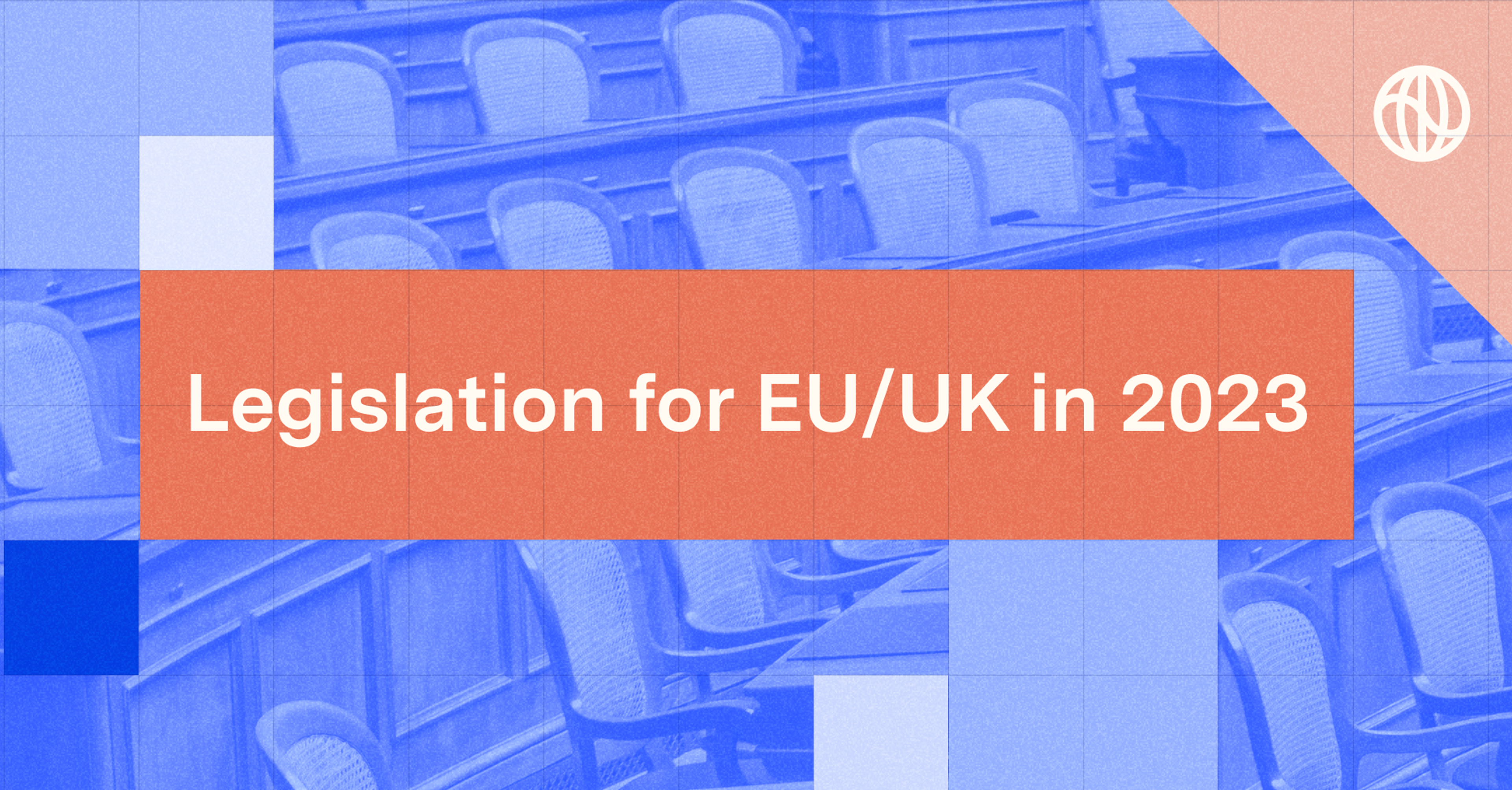Updated March 8, 2024.
We’ve entered a new corporate reporting era: climate impact is increasingly being treated on par with financial data, with the same meticulous expectations for measurement, management, and disclosure. The European Union and the UK are leading this global trend with rigorous regulations, including the EU’s Corporate Sustainability Reporting Directive (CSRD), and we’ve seen new regulation at the state level in the US, with the passage of the Climate Corporate Data Accountability Act (CCDAA) in California.
To help the US catch up to new climate disclosure standards across the industrialized world, the SEC has issued its own climate disclosure rule, which was adopted on March 6, 2024.
This guide covers the details of the final rule. In it you will discover:
- Which companies the SEC’s climate disclosure rule applies to.
- Reporting requirements to comply with the new climate disclosure rule.
- The proposed compliance timeline for 2024.
But the most important thing for companies to plan for isn’t just the specifics of the SEC rule, it’s the trendline. Major national governments, as well as individual US states, are acting in unison to require companies to disclose their climate data.
Many companies publicly listed in the US will now have robust climate reporting obligations in multiple jurisdictions. Companies that are swift and proactive about collecting and acting on this data will see lower compliance costs, higher investor confidence and stronger business resilience.
Which companies are affected by the SEC's climate proposal?
The SEC's rule will affect all public companies with an existing SEC reporting requirement, including all non-US companies with US-traded shares that currently file a Form 20-F. While private US companies are exempt, those on path to an IPO often elect to begin filing public disclosures in advance—in which case they’re likely to be asked by their investors to include this data. These disclosures will be part of their eventual IPO registration statements.
What does the SEC's proposed climate rule ask for?
Much of the SEC’s carbon disclosure proposal builds closely on the work of the Taskforce for Climate-related Financial Disclosures (TCFD), a public-private partnership that came up with 11 core questions that companies across the globe now use to ensure their stakeholders have full insight into the carbon and climate risks in their portfolios.
The SEC’s proposal is for a TCFD+ filing—to be reported alongside financial results, within your annual 10-K report—with focus on three particular areas:
1. Measuring and disclosing climate data
The SEC wants companies to disclose their emissions, plans, and progress in detail, including at least:
- For Large Accelerated Filers and Accelerated Filers: material scope 1 and 2 greenhouse gas emissions (GHG), i.e., direct emissions and those from purchasing electricity, heating, and cooling, excluding the impact of any purchased or generated offsets. If a company needs more time to gather that data, they can include those emissions disclosures in their form 10-Q in the second quarter of their fiscal year. “Material” for the purpose of this rule means there is a substantial likelihood data would be considered relevant for any reasonable investor when deciding whether to buy or sell securities.
- Any material internal carbon price employed and the logic used to calculate it.
- Information on a company’s material climate pledges and targets. That includes updates on material expenditures linked to those climate pledges or targets.
The SEC dropped a requirement from the draft version of its rule that asked companies to include scope 3 emissions—emissions from their suppliers—if material, or if they have a GHG emissions reductions target that includes scope 3 emissions.
Although companies are not required to measure and disclose scope 3 emissions under the final rule, the case for doing so is compelling. Other regulations that may affect companies in scope of the SEC rule, including those in California and the EU, ask for scope 3 emissions disclosure. Moreover, investors are increasingly demanding scope 3 data. In a recent survey, 80% of investors said they consider a company’s reporting on their carbon footprint, and emissions reduction commitments when making a new investment.
2. Assessing and disclosing climate risks
The upshot: climate risks are financial risks, and must be identified and managed with unprecedented rigor.
These risks can be physical (e.g. extreme weather impacts) or transitional (e.g. customer tastes shifting as climate change worsens). When assessing and disclosing these risks, filers must break them down over short and long-term time horizons. They must also disclose actual and potential impacts on their business models, strategies and outlooks—stretching across their products, physical operations, and even R&D expenditures.
Large public companies also need to spell out the financial implications of their attempts to mitigate or adapt to these risks.
They must do so first in narrative form. A freight company, for example, might discuss the implications of new regulatory standards for its fleet of vehicles. Secondly, they must do so in quantitative form. That same freight company might set out the impairment charges associated with the change in rules. Taken together, firms must provide a quantitative description of material expenditures incurred and material impacts on financial estimates and assumptions.
For costs and losses incurred as a result of severe weather events and other natural conditions, —such as flooding or fires—firms must disclose the amounts in a note to their financial statements if the impact is greater than 1% of the absolute value of stockholders’ equity, or deficit, at the end of the relevant fiscal year. This is also subject to other thresholds set out in the rule, designed to protect smaller firms.
Lastly, these filings must include their own meta. That is, they must outline the methodology used for identifying and assessing risks, and they must detail how they factored dynamics like existing or likely regulations, shifts in customer or counterparty preferences, or technological changes.
3. Integrating climate thinking
Investors want more than just plans and data: they want evidence that climate action isn’t the product of one isolated team within a company. They want to understand exactly how climate data—really climate thinking—is incorporated into daily decision-making, especially within the C-suite and the boardroom. That includes how the board discusses those risks. Companies will also have to show exactly how climate risk is integrated into their wider risk-management processes.
Though the proposed rules here focus on transparency rather than forcing specific actions, they will be a significant measure by which investors themselves judge the quality of disclosures.
Will climate data require attestation?
Yes, scope 1 and 2 emissions data will require assurance for large filers. The attestation report requirement will be phased in, moving first to a limited assurance standard and then (for Large Accelerated Filers) to reasonable assurance.
Large filers will have to provide at least limited assurance on their emissions three years after their first emissions disclosure, and a further four years after that for reasonable assurance. To meet reasonable assurance requirements, companies will need to implement internal controls and data governance for their carbon measurement process.
The attestation report must be included in the separately captioned “Climate-Related Disclosure” section of your filing. The attestation report must be prepared and signed by a GHG emissions attestation provider.
This is an unusual step by the SEC, and one that speaks to the rigor with which emissions data will need to be treated. SEC rules typically do not require registrants to obtain assurance over disclosure provided outside of the financial statements, including quantitative disclosure.
When are the SEC climate disclosure requirements expected to take effect?
For Large Accelerated Filers, the first reports are due in the 10-K covering financial year 2025, but these will not include carbon emissions. Those firms will need to make scope 1 and 2 emissions disclosures in the 10-K (or later 10-Q if they so choose) covering their financial year 2026. So in practice those disclosures will likely be published in 2027. For Accelerated Filers, the first emissions reports are due two years later in 2029, using data from their financial year 2028.
(The SEC’s most recent rules on who is considered a large or accelerated filer can be found here.)
When should companies begin preparing for the SEC's new carbon disclosure rule?
Now. While the rule requires emissions reports from the largest companies in 2027 (on 2026 data), this proposal is just one part of a much larger wave. Governments globally are demanding more transparency and more climate action from companies of all sizes. Employees and investors increasingly are also demanding this data. In 2023, over 23,000 companies reported their carbon data to CDP, a public database. Getting ahead of the wave reduces costs and amplifies the impact of early action.
What tools can help companies prepare for climate disclosure?
Watershed is the trusted enterprise sustainability platform that enables businesses to understand, report, and reduce their carbon footprints and demonstrate results with confidence. Watershed currently works with the world’s leading companies to navigate a host of global climate reporting requirements and produce audit-grade reports. The comprehensive platform has everything you need to help your business meet SEC disclosure requirements with rigorous measurement and audit-grade reporting, climate intelligence at your fingertips, and enterprise controls all built-in. To learn more, visit watershed.com/sec or get in touch.









